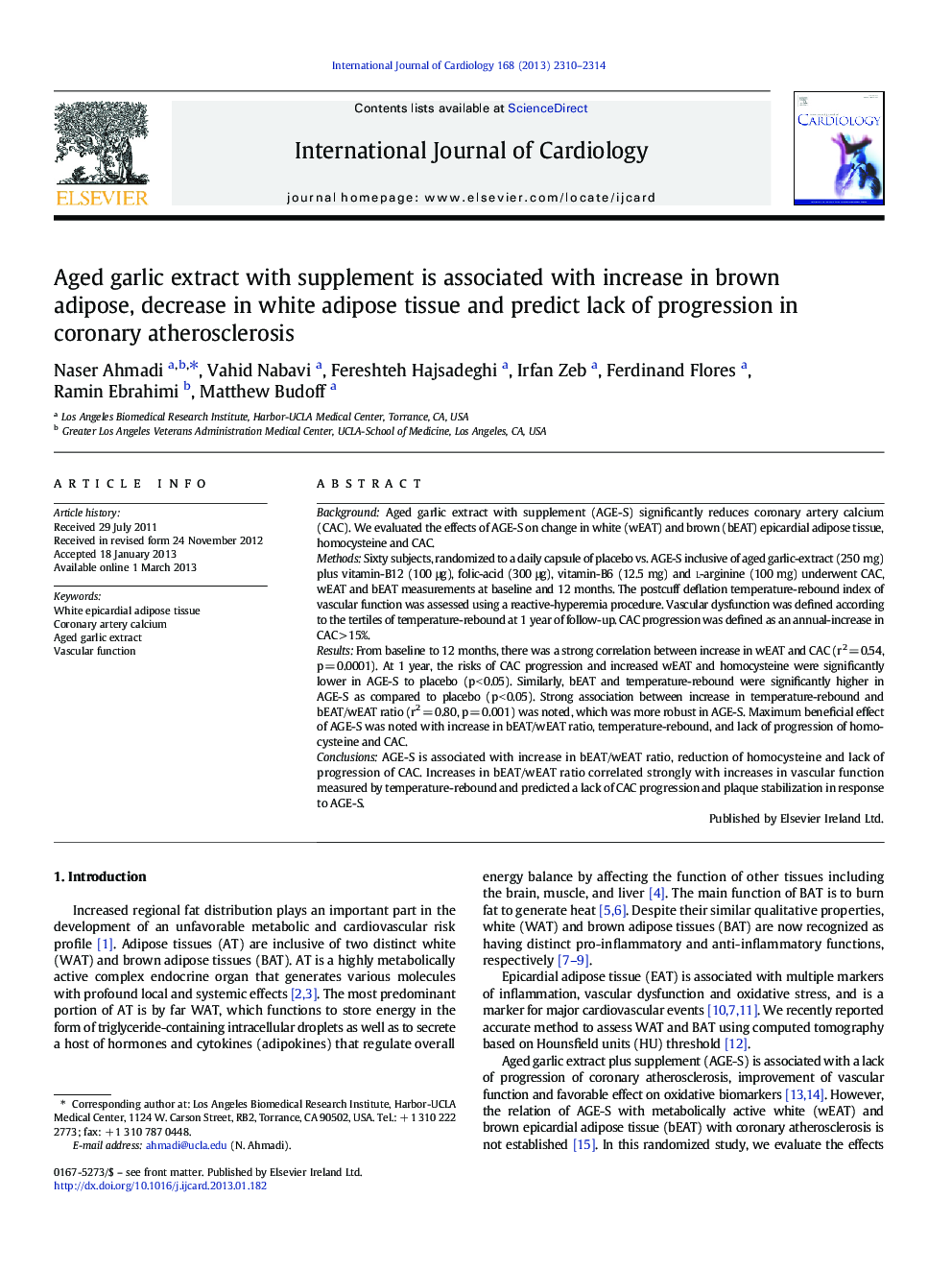| Article ID | Journal | Published Year | Pages | File Type |
|---|---|---|---|---|
| 5976289 | International Journal of Cardiology | 2013 | 5 Pages |
BackgroundAged garlic extract with supplement (AGE-S) significantly reduces coronary artery calcium (CAC). We evaluated the effects of AGE-S on change in white (wEAT) and brown (bEAT) epicardial adipose tissue, homocysteine and CAC.MethodsSixty subjects, randomized to a daily capsule of placebo vs. AGE-S inclusive of aged garlic-extract (250 mg) plus vitamin-B12 (100 μg), folic-acid (300 μg), vitamin-B6 (12.5 mg) and l-arginine (100 mg) underwent CAC, wEAT and bEAT measurements at baseline and 12 months. The postcuff deflation temperature-rebound index of vascular function was assessed using a reactive-hyperemia procedure. Vascular dysfunction was defined according to the tertiles of temperature-rebound at 1 year of follow-up. CAC progression was defined as an annual-increase in CAC > 15%.ResultsFrom baseline to 12 months, there was a strong correlation between increase in wEAT and CAC (r2 = 0.54, p = 0.0001). At 1 year, the risks of CAC progression and increased wEAT and homocysteine were significantly lower in AGE-S to placebo (p < 0.05). Similarly, bEAT and temperature-rebound were significantly higher in AGE-S as compared to placebo (p < 0.05). Strong association between increase in temperature-rebound and bEAT/wEAT ratio (r2 = 0.80, p = 0.001) was noted, which was more robust in AGE-S. Maximum beneficial effect of AGE-S was noted with increase in bEAT/wEAT ratio, temperature-rebound, and lack of progression of homocysteine and CAC.ConclusionsAGE-S is associated with increase in bEAT/wEAT ratio, reduction of homocysteine and lack of progression of CAC. Increases in bEAT/wEAT ratio correlated strongly with increases in vascular function measured by temperature-rebound and predicted a lack of CAC progression and plaque stabilization in response to AGE-S.
